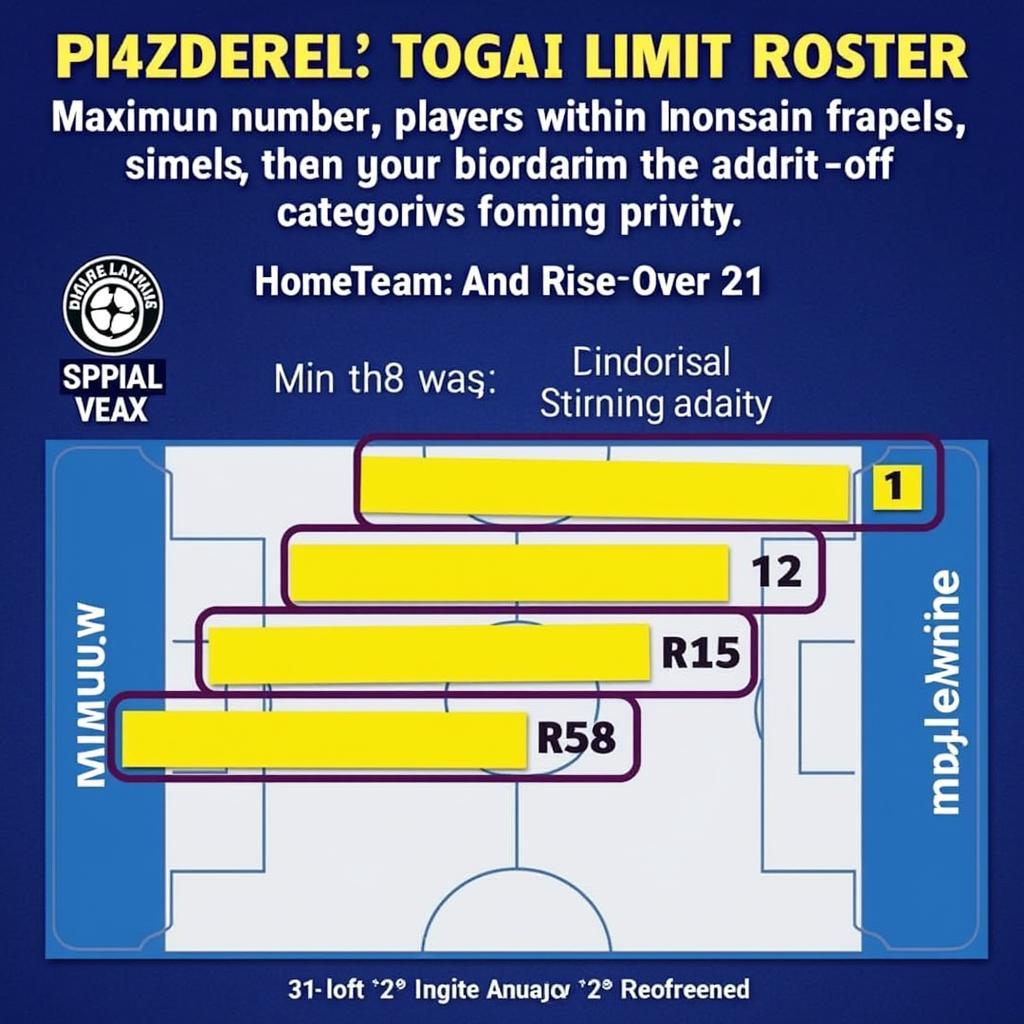Understanding Football’s Limit Roster Rules
October 13, 2024As a professional footballer, I understand the importance of a well-structured team. One crucial aspect that often raises questions, especially amongst fans, is the “limit roster” or “squad size limit”. This rule directly impacts a club’s strategy during transfer windows and ultimately shapes their performance on the pitch.
So, what exactly are these limits and how do they work? Let’s break it down:
Decoding the Limit Roster: A Global Perspective
Football governing bodies, like FIFA and UEFA, implement squad size limits to ensure fair competition and prevent clubs from stockpiling players. These regulations vary across different leagues and competitions, often categorized by age and “homegrown” status.
What is a Homegrown Player?
“Homegrown” typically refers to players who have developed within a club’s academy system for a specific period, usually between the ages of 15 and 21. This rule encourages clubs to invest in youth development and fosters a sense of local identity.
Navigating Different Roster Regulations
-
UEFA Champions League: Clubs participating in prestigious tournaments like the Champions League face stricter regulations. They usually submit a “List A” of a maximum of 25 players, with at least 8 spots reserved for “locally trained” players (4 from their own academy and 4 from other clubs within the same national association).
-
Domestic Leagues: Each country’s top-tier league (like the Premier League in England or La Liga in Spain) will have its own specific squad size limits. For example, the Premier League allows a maximum of 25 players over the age of 21, with no restrictions on the number of under-21 players.
The Impact of Limit Rosters on Clubs and Players
These regulations have significant implications for both clubs and players:
-
Strategic Squad Management: Clubs need to carefully plan their transfers and loan deals to comply with the roster limits. This involves making tough decisions about which players to keep, sell, or loan out.
-
Opportunities for Young Talents: The “homegrown” rule creates pathways for young players to break into the first team. This benefits both the players’ development and the club’s long-term sustainability.
-
Financial Implications: Squad size limits can help control spending and prevent financial instability within clubs.
Limit Roster: A Balancing Act
Managing a limit roster requires a delicate balance. Clubs aim to assemble a competitive squad capable of challenging for titles while also nurturing young talent and maintaining financial stability. It’s a complex puzzle that adds another layer of intrigue to the beautiful game.
 Football Limit Roster Explained
Football Limit Roster Explained
FAQs: Unraveling Common Queries about Limit Rosters
1. What happens if a club exceeds the limit roster?
- Clubs exceeding the limit face penalties, which may include fines, transfer bans, or point deductions.
2. Can injured players be replaced in the limit roster?
- Rules regarding injury replacements vary. Some competitions allow for specific exceptions in cases of long-term injuries.
3. Do cup competitions have different roster limits compared to league games?
- Yes, some cup competitions may have different rules, often allowing for larger squads or more flexibility with substitutions.
4. Are there any exceptions to the “homegrown” player rule?
- Exceptions are rare and typically involve players who have spent a significant portion of their development within a specific country’s football system, even if they don’t meet the exact “homegrown” criteria.
5. How often are limit roster rules updated?
- Football governing bodies periodically review and update these regulations to reflect the evolving nature of the game and address any emerging issues.
For further support or inquiries, reach out to us at:
Phone Number: 0396443476
Email: [email protected]
Or visit us at: 23 Tháng 3, Đắk Nia, Gia Nghĩa, Đắk Nông, Việt Nam.
Our customer support team is available 24/7.